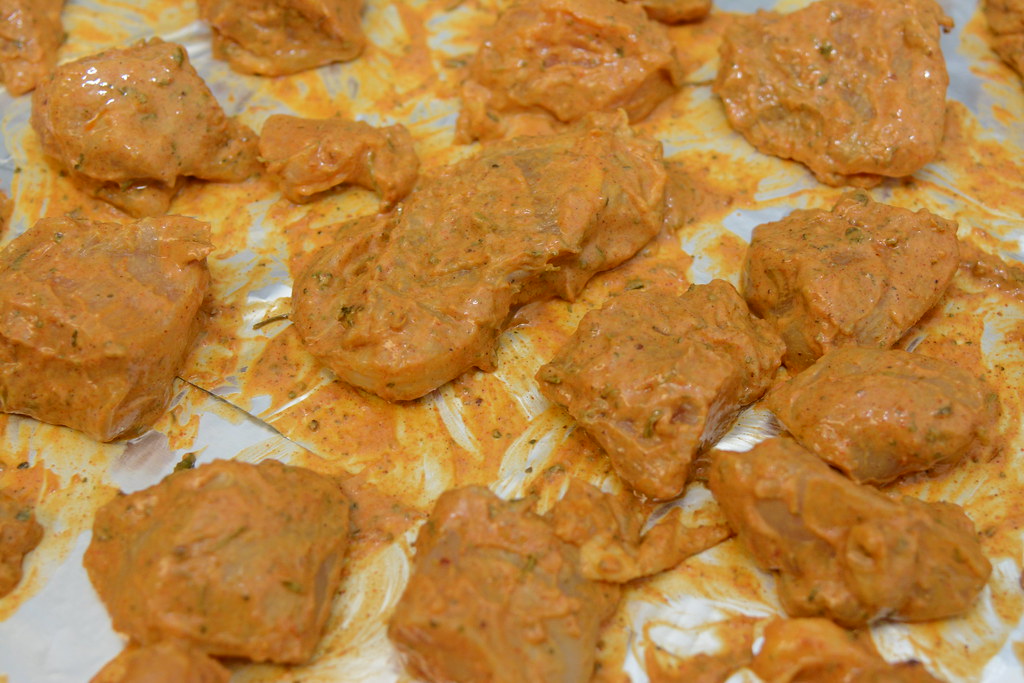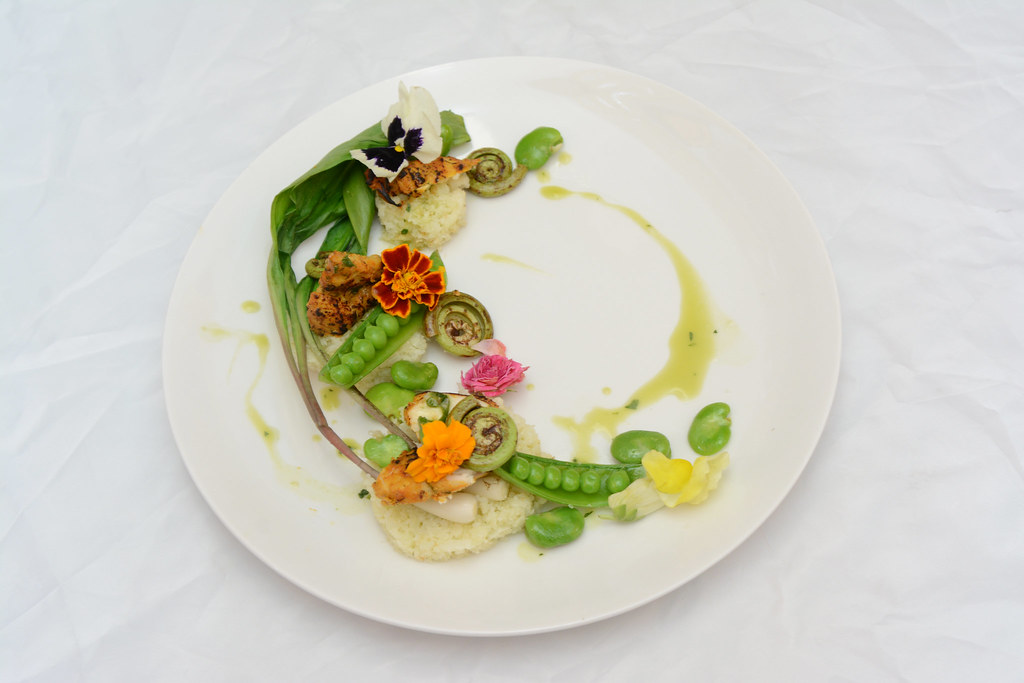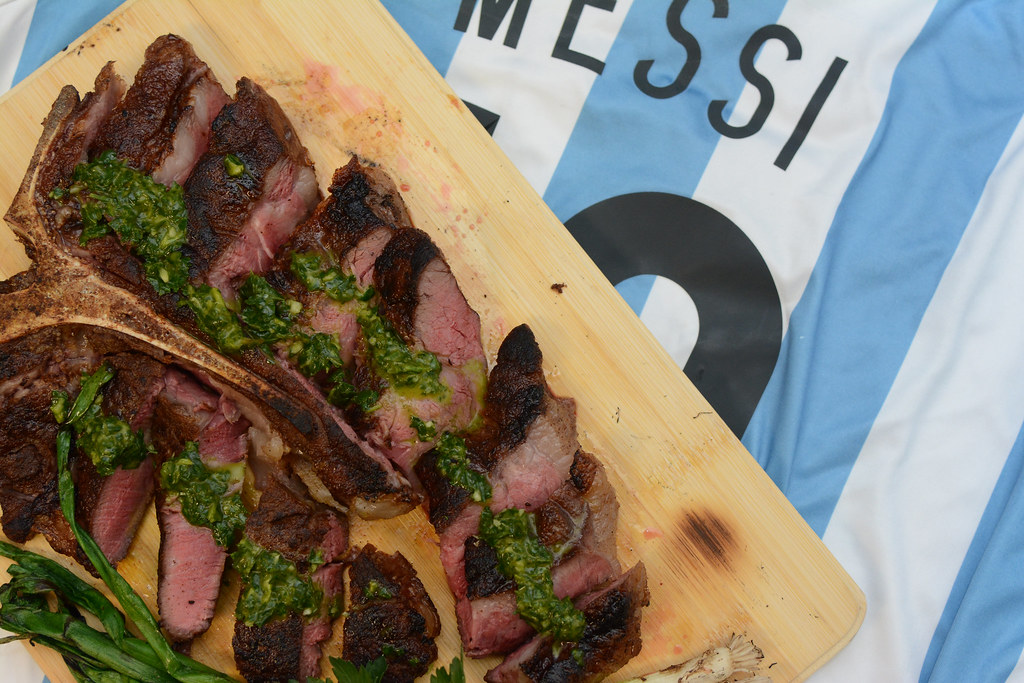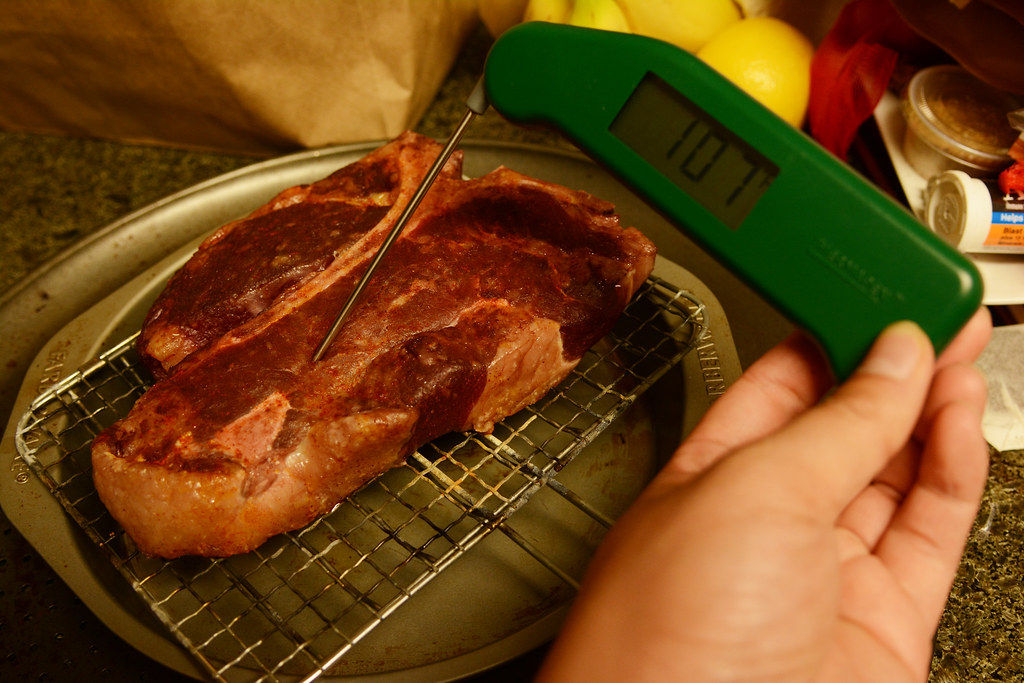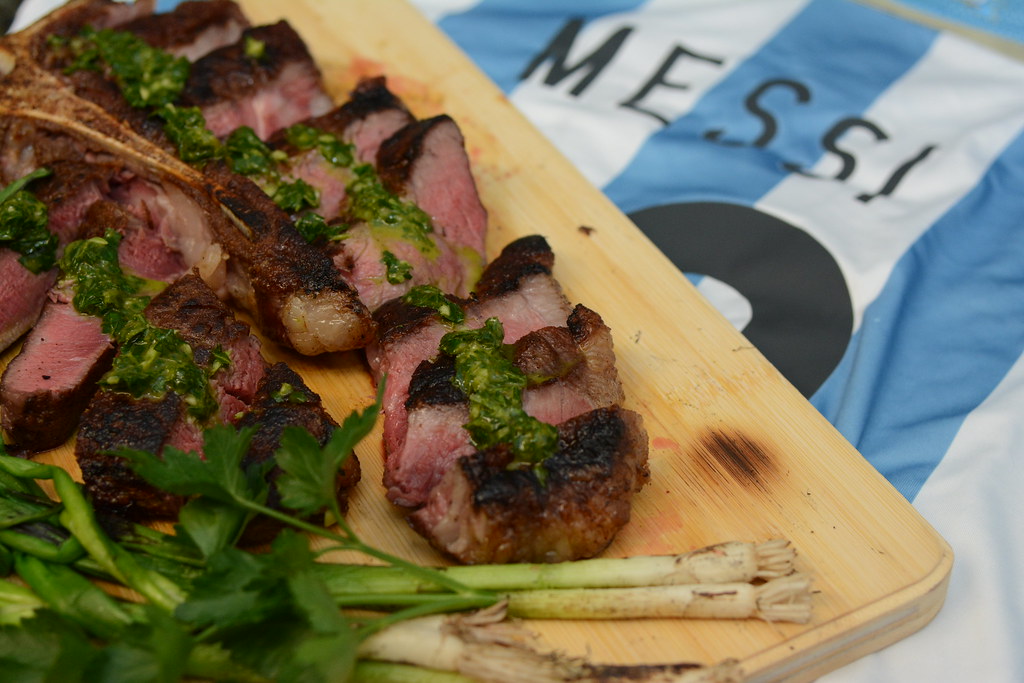Tuesday, May 12, 2015
No flex zone. No carb zone. Chicken Kebabs with Cauliflower "couscous"
A month ago, I bought 4 soccer jerseys after a very good run of betting wins. Thank you Champions League for providing so much joy. Turns out, there was a reason these jerseys cost $15 and came from who knows where in China. The sizes were all wrong and these larges made me look like a stuffed sausage. Unfortunately, the trouble of returning them was too much and I decided that I'll set a goal for myself and try to fit in them by the end of the year.
On my quest to fitting into some $15 soccer jerseys, I've been going to the gym more often. But I guess fitness starts in the kitchen, so I have to eat healthier too. Carbs are probably the hardest thing for me to cut out, especially rice. However, over the course of a year or so, I discovered cauliflower can pretty much be a substitute for anything. Mashed potatoes? Mashed cauliflower. Rice? Cauliflower rice. Couscous? You get the idea. It's so simple to make, very low in carbs and calories. Gosh, I sound like one of those health nuts.
Of course, you need the protein too, so I whipped up these Middle Eastern flavored chicken kebabs to go with the couscous, and blanched some fresh spring veggies as a side. I'll be fitting into that Neymar jersey in no time!
I do hope you give this a try!
Chicken Kebabs with Cauliflower Couscous
Serves 4
Chicken
2 lbs of boneless, skinless chicken breast, diced into large chunks, about 1.5 inches.
150g of low fat or non fat plain greek yogurt
1/8 tsp cinnamon
1/2 tsp cumin
1 tsp turmeric powder
1 tsp curry powder
2 tsp paprika
2 tsp zhoug spice blend (found this at Trader Joe's)
2 tsp salt
2 tsp pepper
2 tsp olive oil
Juice and zest from 1/2 a lemon
Couscous
1 head of cauliflower
2 tsp olive oil
2 minced garlic cloves
2 tsp salt or to taste
Chicken
1. In a large ziplock bag, add everything but the chicken. Mix until thoroughly combined, then add the chicken. Shake or mush the bag so that every piece of chicken is evenly coated with marinade. Allow to marinade for 1 hour or overnight.
2. Place chicken on a foil lined baking sheet, and pop them into a preheated 350 degree oven until they reach 155F internal temperature, about 15 minutes.
3. Turn on the broiler to high, or take a torch and sear the chicken for a nice char. Let chicken rest for 5 minutes.
3a. Alternatively, you can cook the chicken over a grill for additional smokey goodness.
Couscous
1. Cut cauliflower into manageable chunks. Blitz in a food processor until you get 1-2mm crumbles.
2. In a skillet over medium high heat, add the olive oil and garlic. Fry until fragrant (about 30 seconds) then add the cauliflower. Use a spatula to evenly coat the cauliflower with the oil. Fry for 4-5 minutes then add salt to taste. Plate up with some chicken and blanched veggies, and get down with your bad self.
A study in reverse searing. Argentine style porter house steak.
FC Barcelona had just ransacked Bayern Munich during the first leg of the Champions League semi finals, and to celebrate the best football player in the world, I made steak with an Argentine kick.
This was my first time making steak using the reverse sear method, and it came out wonderfully. A good cook is always testing new techniques and learning new ways to make their favorite meals.
In a previous post I talked about making the perfect steak by using the sous vide method. While steak cooked in that manner does come out pretty damn tasty for very little effort, the reverse sear gave me a much tastier steak, and for the same amount of work really.
The reverse sear is a similar ideology to cooking sous vide. You cook the steak at a low temperature until the internal temp reads close to your desired doneness, then you do a hard sear at the end to get the crusty goodness. By cooking at a low temperature, you reduce the grey banding that is found when steaks are cooked starting on a high heat.
The difference here is this low temperature cooking is done in the oven instead of in a water bath. The dry heat of the oven helps to dry out the exterior of the steak, meaning when you sear, it'll get a much nicer crust. You also get a subtle roasted flavor that is absent from cooking sous vide.
Personally, I think the biggest difference came from pre-salting. Most sous vide methods don't have you salt the steak until it comes out of the water bath. Salting pre-bath can sometimes lead to a cured texture, especially if cooking for long periods of time, which can be off-putting. However, I found that post salting just wasn't enough, and I had to add more salt at the dining table. Pre-salting or dry-brining, leads to moist, juicy, flavorful steak. The salt draws out the moisture from the steak and mixes with the salt, forming a brine. And, when given enough time, the salty liquid gets re-absorbed by the steak.
This was my first attempt at this method, and I think there's a ton more experimentation to be done, and a lot more steaks to eat.
Anyways, on to the instructions! This is more of a technique thing than a recipe and can be adapted to however you like your steaks served. I hope you try it out!
Reverse Seared Porter House.
Serves 2.
1 1.5lb porter house steak
salt (about 1 to 1.5 tsp)
smoked paprika (optional)
1. Liberally season the steak on both sides with salt and smoked paprika. It should look like it snowed all over the steak. Put the steak back in the fridge on a metal rack (to let air circulate around the steak) and let the steak rest for about an hour. The salt will draw out the moisture in the steak, and after maybe 20-30 minutes, this salty liquid will get reabsorbed into the steak.
2. On a metal rack over a baking sheet, place the steak into a very low temperature oven, as low as you can go. My oven's lowest temp is 170F, but yours might be different. Cook until the steak reads about 105-107F internal temperature. Take the steak out and let it rest for 10 minutes. The temperature will continue to rise during the resting period, and will rise even more after the searing stage, so you don't want to let the steak get any hotter or you'll end up over cooking it.
3. Meanwhile, heat up a stainless steel or cast iron pan over medium high heat. You'll want to get it super hot, smoking almost. Squirt in a tiny bit of corn or vegetable oil (not olive oil since the smoke point is too low) and throw the steak on the pan. Sear for 30 seconds per side. Make sure you open a window or a door, and turn off your smoke detectors because there will be a LOT of smoke.
4. Since the steak has already rested, you can carve and serve right away! I served the steak with a chimichurri sauce and some grilled green onions. Look at that beautiful thing. Almost no grey banding to speak of.
Subscribe to:
Comments (Atom)


